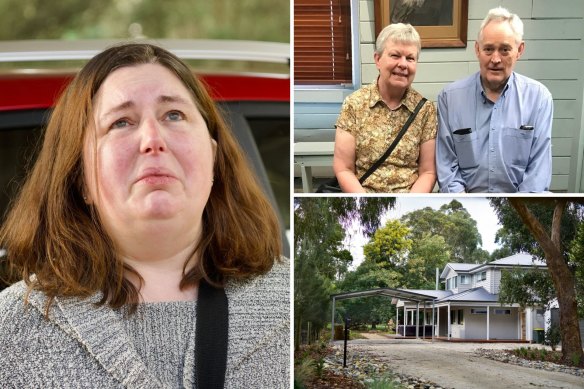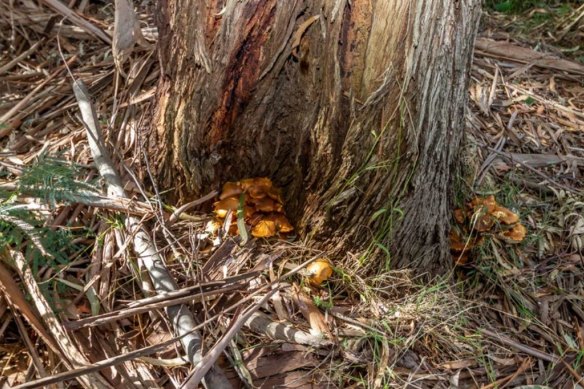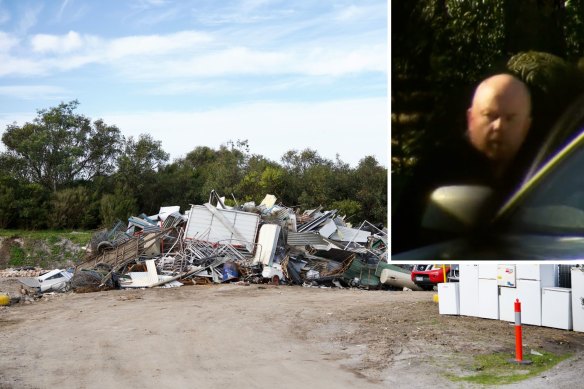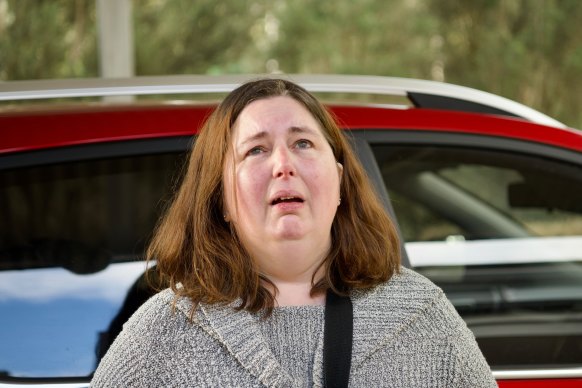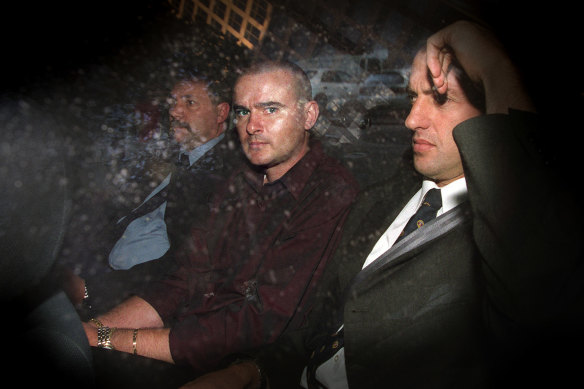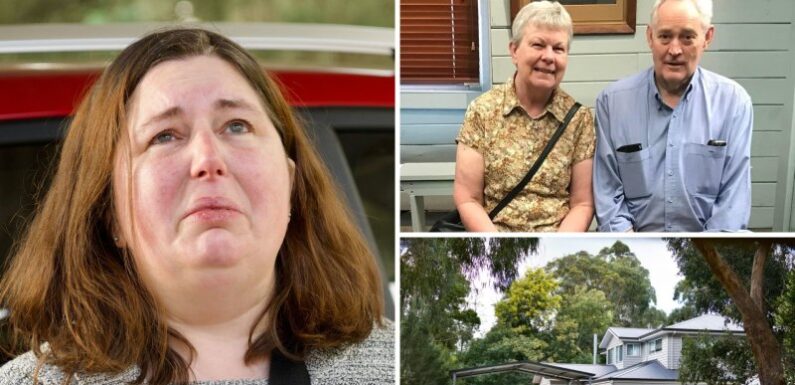
Save articles for later
Add articles to your saved list and come back to them any time.
Rumours and mushrooms need much the same environment to thrive. They must be kept in the dark and fed bulldust – and there’s been no shortage of the latter coming from many quarters.
In the tragic and mysterious case that resulted in three people perishing and a fourth fighting for life after allegedly ingesting poisonous mushrooms, there remains plenty of both.
And while we all love a mystery, we should remember three decent and caring people are dead with a fourth dangerously ill.
The homicide squad has begun to shine a light into the darkness to separate speculation from science and fact from fiction.
First, a quick recap on what may well prove to become known as the Death Cap Case.
On Saturday, July 29, Erin Patterson had her ex-husband’s parents, Gail and Don Patterson, plus Gail’s sister Heather Wilkinson and her husband, Reverend Ian Wilkinson, over for a light luncheon at her Leongatha home.
Poisoning victims Heather and Ian Wilkinson and the house where Erin Patterson, who prepared the deadly lunch, lives.Credit: Marta Pascual Juanola; Supplied
The four guests presented the following day at the Leongatha Hospital with gastro-like symptoms and were admitted.
Local paper the Gippsland Sentinel-Times reported a release from the hospital, saying: “A fifth person was discharged, after a short presentation at the Leongatha Hospital.”
As there were no other adults present, and Erin’s two children didn’t eat the meal, it will be a matter of keen interest to investigators as to why Erin presented at hospital when she appeared symptom-free.
With excellent snooping, the Sentinel-Times published real estate pictures from the previous sale of the double-storey, stylish weatherboard home that showed a cluster of alarmingly orange mushrooms at the base of a tree that no one in their right mind would eat.
The photograph from the South Gippsland Sentinel Times.
A case of multiple mysterious deaths always draws the attention of the homicide squad, and investigators’ curiosity was piqued when they discovered a social media post from June the previous year from Erin’s separated husband Simon.
“Some of you will know that I’ve had some serious medical problems since late May. I collapsed at home, then was in an induced coma for 16 days through which I had three emergency operations mainly on my small intestine, plus an additional planned operation,” he wrote. “My family were asked to come and say goodbye to me twice, as I was not expected to live.”
Naturally, police are checking Simon Patterson’s medical records and his recollections into his collapse and recovery.
The Herald Sun reports Simon allegedly told friends he felt ill several times after eating with his former wife. This will be a matter of furious interest to detectives. Indigestion or intelligence? Watch this space.
Any homicide investigator will tell you that while lightning can strike twice, you certainly want to go and have a look at the scorch marks.
Police will have urged Simon not to drive down media street as they intend to play their cards as close to their chest as a professional poker player.
A tough case
Death cap mushroom poisoning presents as gastro-symptoms, a small period of apparent recovery, then a relapse that results in the collapse of internal organs until the liver and kidneys shut down.
On August 4, six days after the Leongatha lunch, sisters Heather Wilkinson and Gail Patterson died. The following day Don Patterson died, and Reverend Wilkinson was fighting for his life and was placed on the emergency liver transplant list.
Detective Inspector Dean Thomas, head of the homicide squad.Credit: Nine News
The homicide squad’s chief, Detective Inspector Dean Thomas, addressed the media using the deadest of bats as if playing for a draw on the last day of a test on a Mumbai turner. “I would like to say that, because the homicide squad is investigating this matter, it doesn’t automatically mean that the deaths are suspicious,” he said.
The house was searched and items seized, including pantry products and cooking utensils likely to have been used in meal preparation.
Thomas is right, of course. This is a complex and, in all probability, protracted case that involves the Health Department and toxicology reports to complete a brief of evidence for either the coroner or a criminal court.
At this point, no one has announced a cause, but few poisons destroy the liver so savagely as death cap mushrooms.
Tests will be conducted on a food dehydrator found dumped in a local tip to see if it is working and if it was used to dry mushrooms – a food process that can take four to eight hours. They have asked for CCTV footage from the tip to see who dumped the dehydrator.
Why police attended the tip, 10 kilometres from Leongatha, is a matter they have chosen not to share. Suffice to say it wasn’t a fluke.
Koonwarra Transfer Station and Simon Patterson (inset), the son of two of the people who died.Credit: Marta Pascual Juanola; Nine News
They will try to work out why the four guests at the lunch were struck down with such devastating effect while the hostess was not. There are many perfectly reasonable explanations for this that may well surface in the fullness of time.
Many questions police would like answered remain conjecture. This is because there were five adults present at the meal. Four can’t talk and one won’t. Erin Patterson has exercised her right to refuse to answer many, which lawyers will tell you is absolutely her right – and in many cases the sensible option.
Their questions would include: Where did the mushrooms come from? Were they foraged and if so, by whom? Why would someone adept at country life make such a mistake? Why were police initially told they came from a supermarket when no-one else in town became sick? What was the reason Erin attended the Leongatha Hospital?
If processed in a dehydrator, when did this happen? (They have a shelf life of a year). Did the chef eat the meal? Was the meal pre-plated and served individually?
If the purpose of the lunch was to talk about child access, it may be why Pastor Ian Wilkinson, a respected wise head in the community and his wife Heather, were there as mediators. Police refused to say if Erin’s husband had declined the lunch invitation.
Confronted by the media, Erin Patterson appeared distressed and said: “I’m so devastated about what’s happened and the loss to the community and to the families and to my own children. They’ve lost their grandmother.”
In such an investigation, police will scrutinise the online browsing history of Patterson and perhaps if she purchased or borrowed books (including ones containing recipes).
This by no means suggests Erin Patterson is guilty of anything, and as she has said: “I’ve done nothing wrong.”
A distraught Erin Patterson on Monday afternoon.Credit: Marta Pascual Juanola
Quite separately from this matter, the use of poisons in crime thrillers and real life playbooks has gripped audiences for centuries.
A quick browse reveals that the use of toxic mushrooms is a favourite crime fiction theme including in Murder by Mushroom by Virginia Smith, where a spiral pasta casserole at a church function is laced with deadly mushrooms in a small country town.
To prove no plot is ever new, the Roman emperor Claudius was killed by his wife Agrippina when she served him a plate of poisoned mushrooms in AD 54.
One case that gripped the public was the Society Murders. Margaret Wales-King and her husband Paul King were bludgeoned to death by her son Matthew in April 2002.
Matthew Wales on the day of his arrest in 2002.Credit: Ben Richards
Matthew invited the couple to a home-cooked dinner of aperitifs, minestrone (laced with his mother’s crushed sleeping pills), vegetarian risotto, Chilean red and white wine, and dessert followed by soothing chamomile tea.
Once they lapsed into sleep he beat them to death and disposed of them via a trailer he rented with his credit card. Some people aren’t meant to dabble in crime.
In Bendigo years ago, meat worker Johnny Moss started a slow unexplained spiral into ill-health.
His wife Lorraine was always by his side, feeding him home-cooked meals, asking concerned medical questions and finally taking her wheelchair bound husband to the pub for respite. He started feeling ill in 1978, and was in and out of hospital for years.
John and Lorraine Moss on their wedding day.
At work, he felt so ill he gave his home-cooked stew to a mate, a single man who took it home for dinner.
“It was the worst I had ever felt in my life,” he told police. “I wonder how I survived.”
Meanwhile, Lorraine was broadening her mind, borrowing from a friend a medical text on poisoning and insect bites. She also went to a Bendigo library to read books on poisons.
In August 1983, doctors took nail and hair samples to test for lead arsenic poisoning. The results were mislaid and didn’t get to the doctors at the Austin Hospital until January 12, 1984. It was too late – Johnny Moss, 38, died the next day.
Johnny Moss’ hair had 80 times the normal level of arsenic. Tests confirmed he was poisoned over years and was fed four massive doses over the last eight weeks of his life.
Daughter Colleen told police: “Our whole family life fell apart after dad died. Mum changed. She started wearing make-up and provocative clothing.”
Bobby Whyte worked with Johnny Moss at the local smallgoods factory. He started doing odd jobs around the Moss home when his workmate became ill.
A few months after Johnny died, Whyte moved in and later married Lorraine. She was charged with murder, but denied the allegations and the prosecution was dropped.
Years later she confessed to her daughter and was convicted, with trial judge Bill Gillard remarking: “It is hard to think of a more callous, heartless, wicked person. Your husband was suffering excruciating pain, yet you continued to feed him large doses of arsenic – your wickedness knew no bounds.”
Veteran homicide investigator Jack Jacobs visited the house many times. “She always offered us a cup of tea. I always made sure I never took it.”
The Morning Edition newsletter is our guide to the day’s most important and interesting stories, analysis and insights. Sign up here.
Most Viewed in National
From our partners
Source: Read Full Article
